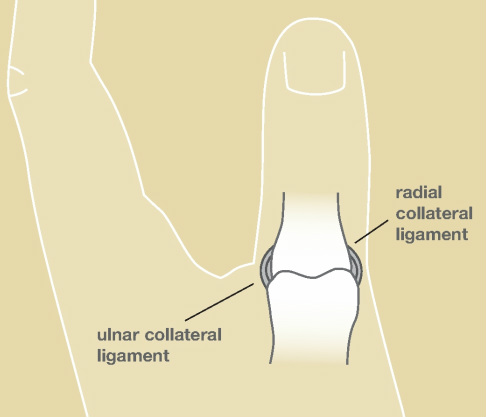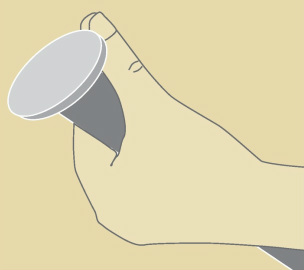MAKE AN APPOINTMENT TODAY!
Thumb Sprain
|
A sprain is an injury to a ligament. Ligaments are the connective tissues that connect bones to bones across a joint. These types of injuries are common in sports and falls. Often, the thumb is jammed into another player, the ground, or the ball. The thumb may be bent in an extreme position, causing a sprain. The thumb will usually swell and may show bruising. It is usually very painful to move.
Gamekeeper's Thumb or Skier's ThumbThe most common cause of thumb sprain is the ulnar collateral ligament injury (see Figure 1). Injury to this ligament is sometimes called skier’s thumb or gamekeeper's thumb. It occurs when the skier falls and the pole acts as a fulcrum in the hand to bend the thumb in an extreme position (see Figure 2). This ligament may also be injured by jamming the thumb on the ground when falling or by jamming the thumb on a ball or other player. Historically, this condition was commonly observed among gamekeepers and Scottish fowl hunters The radial collateral ligament (see Figure 1) may also be injured. It is much less commonly injured than the ulnar collateral ligament.
|
Treatment of Thumb Sprains
X-rays are usually taken to make sure the bones of the thumb and hand are not fractured. Your doctor will then examine the thumb to determine whether the ligament is torn. If the ligament is partially torn, it is usually treated in a cast or splint. Radial collateral ligament injuries are frequently treated this way as well. The end of a completely torn ulnar collateral ligament often gets trapped behind a tendon. Complete ulnar collateral ligament tears are most commonly treated with surgery to repair the ligament. Sometimes the remaining ligament tissue is of poor quality and the ligament must be reconstructed.
Chronic Thumb Sprains
The term “chronic” refers to an old injury of greater than several weeks duration. In this case, the joint may be unstable with symptoms of pain, especially with pinching. The joint may feel loose and strength may be decreased. These injuries may be treated by reconstruction of the ligament, or joint fusion if arthritis is present.
Thumb Sprains, Fractures, and Arthrits
On occasion, fractures may occur along with the thumb sprain. These may require additional surgery with repair using metal pins, screws, or plates. Cartilage damage may occur as well which does not show up on x-ray. This occasionally results in long-term pain and eventual arthritis. Some patients may benefit from cortisone injections or eventual surgery.
Reproduced with permission from the American Society for Surgery of the Hand www.handcare.org
Disclaimer and Privacy
IZADIHAND.COM © 2011-2022 Kayvon David Izadi MD - All Rights Reserved
Webmaster
IZADIHAND.COM © 2011-2022 Kayvon David Izadi MD - All Rights Reserved
Webmaster


